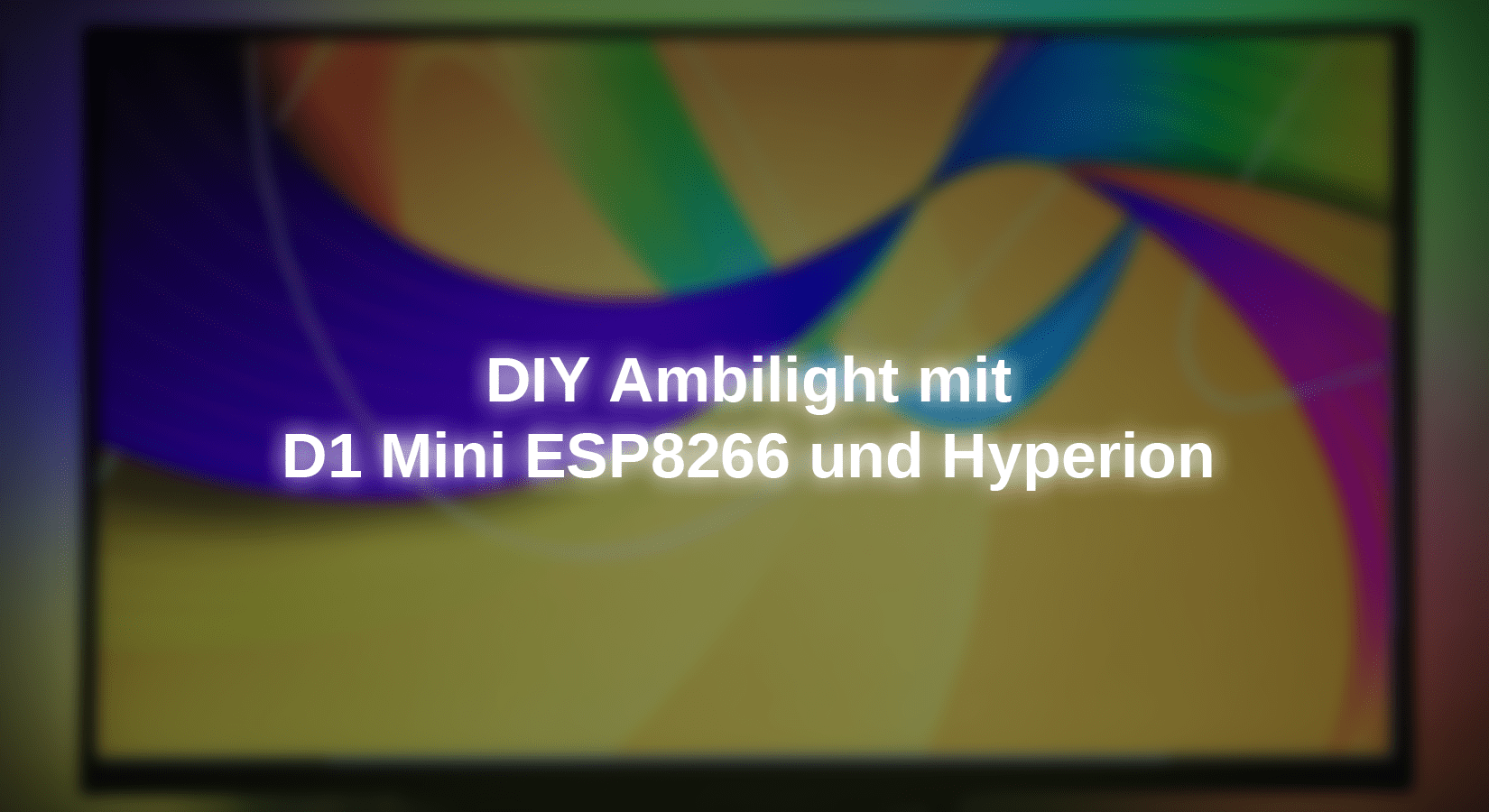This contribution was made by the guest author Bastian Brumbi sent:
Many modern televisions have a so -called one Ambilight Installed, this is LED, which are mounted on the back and illuminate the background accordingly. This expands the television picture and creates a pleasant effect for the eyes. In this blog post we want to build such backlights ourselves and retrofit on our PC screen. To do this, we use a D1 Mini ESP8266 on which a finished firmware is installed.
Hardware
- D1 Mini Nodemcu with ESP8266-12F WLAN module compatible with Arduino - AZ-Delivery
- BTF-League WS2812B 5M 60 LEDs/Pixels/M 300LEDS RGB black PCB stripes with 5050 SMD LEDs 5V IP30 not waterproof (not content power supply and controller): Amazon.de
- Tension converter XL4015 DC-DC Step Down Module 5A 8V-36V for 1.25V-32V- AZ-Delivery
- LM2596S DC -DC power supply - Adapter Step Down Module - AZ-Delivery
Construction
Since we stick to the entire screen LED strips, it is important to ensure sufficient power supply. There are also https://wled-calculator.github.io/ A useful tool in which you can enter the number of LEDs and calculate the maximum power consumption. In my case with 75 LED 3 amps. Since my monitor has an external 12V power supply, I use this voltage and regulate it to 5V with a Buck Converter.

Wiring the electronics

Back of the monitor with glued -up LED
software
First, the WLED software must be installed on the D1 Mini board for the control of the LED strip. The easiest way to do this is via the user-friendly web installer. To do this, open https://install.wled.me/ in the Chrome or Edge desktop program. Select the current release there in the dropdown and click on Install. Thereupon a window opens in which you have to select the serial COM port of your D1 minis (For the programming, the corresponding drivers must be installed for the CH340 in this case). After successful installation, the ESP opens an access point. After you have connected to this, you can enter your network access data in the WLED settings. After a successful connection, the computer communicates with the ESP via the UDP network protocol. This completes the programming of the ESP.

In order to record the content of your screen and to calculate the colors of the individual LED, you must have the Hyperion ambilight Install a software. To do this, invite you to https://github.com/hyperion-project/hyperion.ng/releases The file suitable for your operating system (for Windows .exe). After installation, you can call up the configuration website via the IP address of your device on port 8090 in the browser
(e.g. http://192.168.178.92:8090). If you do not know the IP address, it can be determined via your router or in the terminal via the IPCONFIG command (Windows) or ifconfig (Linux).
Note: Some Linux distributions use the Wayland display protocol, which unfortunately does not support the internal screen recording at the present time.



Enter the arrangement of the LED here. The LED on which the ESP is connected (feeding point) must be marked in black (here at the bottom left)

Photo of the result
If you do not want to install the backlight on your PC monitor, but on a television, this is possible with the help of a Raspberry Pi and an external USB video grave.
Have fun recovery!











4 Reacties
Hans Meiser
Danke für den Guide. Ich träume seit Jahren von Ambilight, habe aber nie geeignete Philips Fernseher im Angebot gefunden.
Andreas Wolter
@Daniel: dazu habe ich das hier gefunden:
https://www.youtube.com/watch?v=rFHU1WkLQHU
Grüße,
Andreas Wolter
AZ-Delivery Blog
Daniel
Hallo zusammen.
Ich bin neu hier da ich auf der Suche nach einer Anleitung bin für das ambilight am Fernseher.
Ich bin hier auf eine Anleitung gestoßen mit dem esp8266.
Ist das überhaupt garnichts realisierbar mit diesem Chip ,also ist dafür zwingend ein Raspberry Pi nötig ?
Vielen Dank schonmal im voraus.
Mit freundlichen Grüßen
Kai
Herrvorragende und kompakte Anleitung.
Hat alles wunderbar geklappt.